
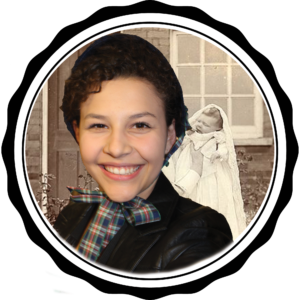
Eliana “Ellie” Karhu, 1910 Nurse
Late Edwardian 1899-1914 Working Women; 1899-1914 Edwardian

Ellie is a nursing student with a passion for the performing arts. If you consider what the two have in common, it’s people – helping them to understand things and to feel more positive about their lives.
This is an opportunity for Ellie to study and emulate real nurses in history. There are many women who brought fame to the profession – Florence Nightengale in the Crimean who “invented” it and created the concept of “uniform” with the help of the American sportswear company Redfern, Mother Theresa who implemented the concept, and many many others. There are also lots and lots of photographs, artifacts, and museum displays about nurses starting with the Civil War (because the camera had been invented just before then).
Most of the stories, however, start with World War I, which according to history books started in 1915. We who study the history of women know the “rumblings” began much earlier than that with the movement of ships and armies into strategic positions, capturing of vessels, and general breakdown of political diplomacy in parts of the world.
Silhouettes depicts American women years 1740-1914, and we stop just short of World War I on purpose. The Edwardian fashion era had already been exploding into factions since the 1890’s, and by 1914, a woman was as likely to be dancing the Tango in a tight-ankled “hobble” skirt as wearing the newly invented “breast supporter” which would become the “brassiere” and a full bodied corset as they would a tight Edwardian monobosum corset and large feathered hat as they would a sequined and beaded low-waisted tea gown. By 1915, pretty much “anything went”, and so we stop short there.
Depiction of a nurse seemed logical because the profession was gaining respect, and in the next years, would be absolutely vital everywhere in the world. Their fashion was somewhat standardized, and so could be studied, analyzed, and created for depiction of a specific character without too much difficulty. The question was “whom”?
Key Real Nurses of the Time
History books note several women before and after the 1910 year we have selected. They were in the profession of nursing before the War, and after for the most part. Some we draw on information about the personalities and traits, although they might not hit our specific time frame.

Click here to go to Ellie’s Historical Time & Place page (next)
Click here to go to Ellie’s Fashion History page
Click here to go to Ellie’s Design Development page
Continue to see the finished project below:

Final Design Sketches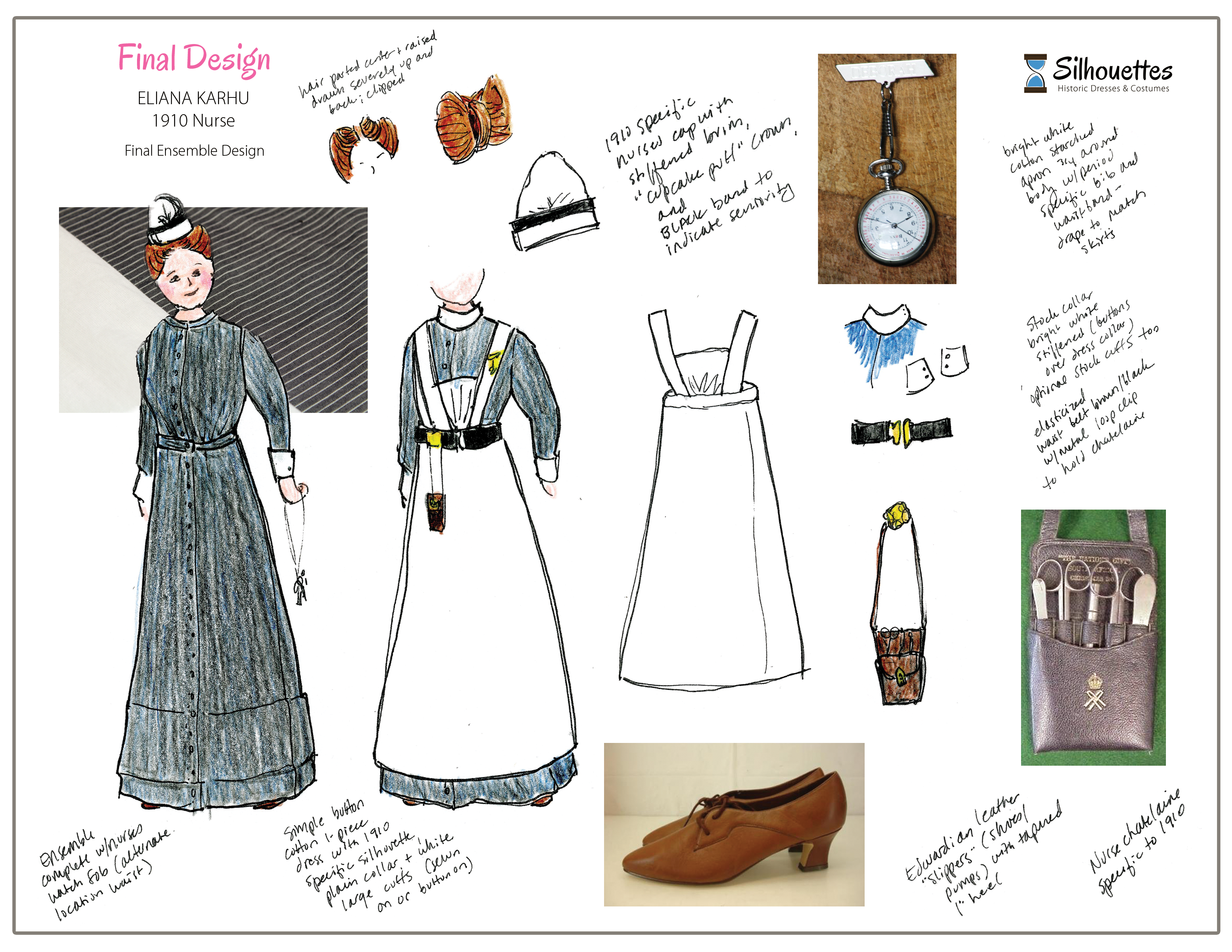

Final Selections – Fabrics & Notions
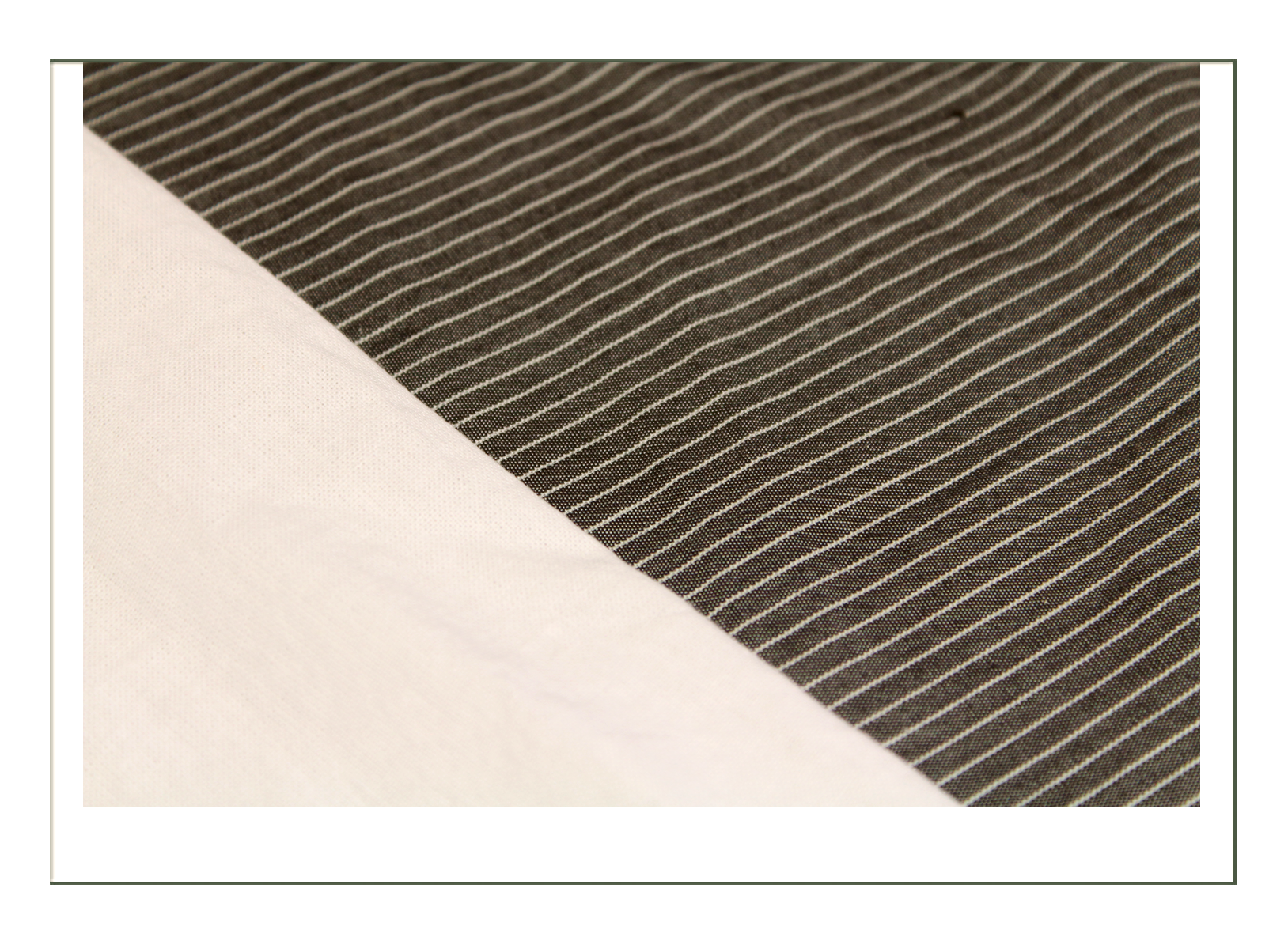
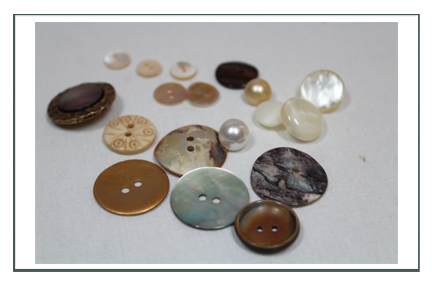
 Slip (Chemise)
Slip (Chemise)
No longer a chemise, the new “slip” was designed to fit under the long profile corset. Ellie’s is of a woven 100% cotton striped lawn which gives it structure. Instead of a tied bodice, this is gathered to fit. The bottom has extensive pleats for easy movement of the legs in all directions.
This is the design for a woman for function, easy maintenance, and easy comfortable movement. The only challenge will be buttoning up the back, but it is close to being possible to slip it over the head like the chemises of the decades earlier.
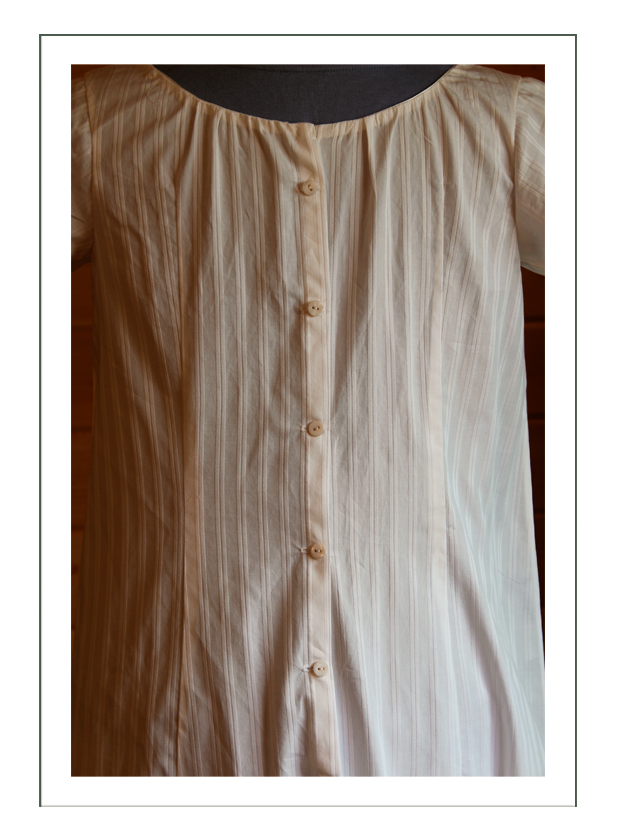
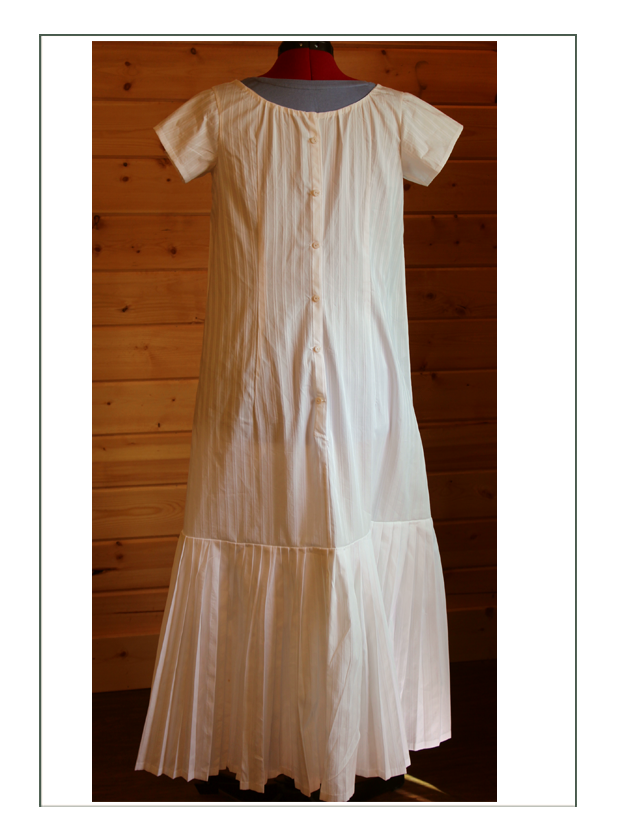
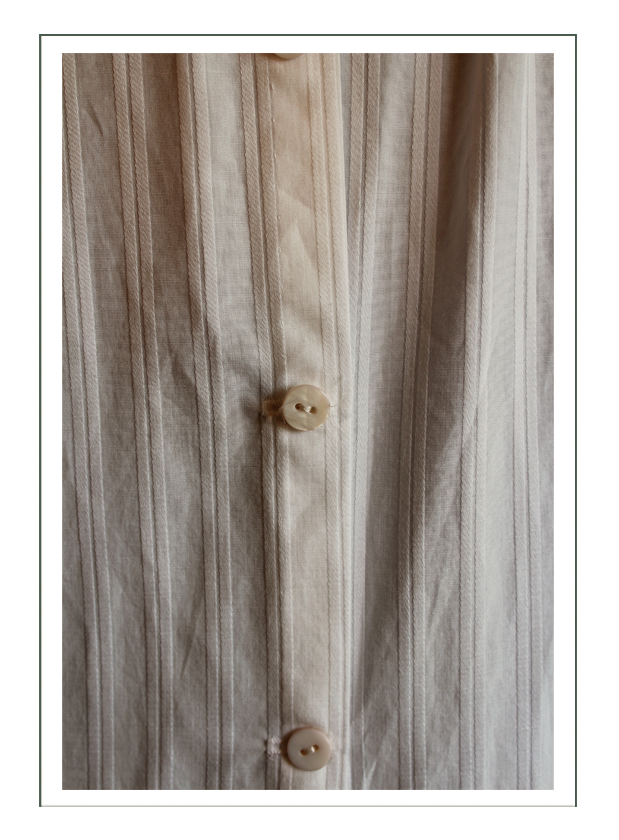
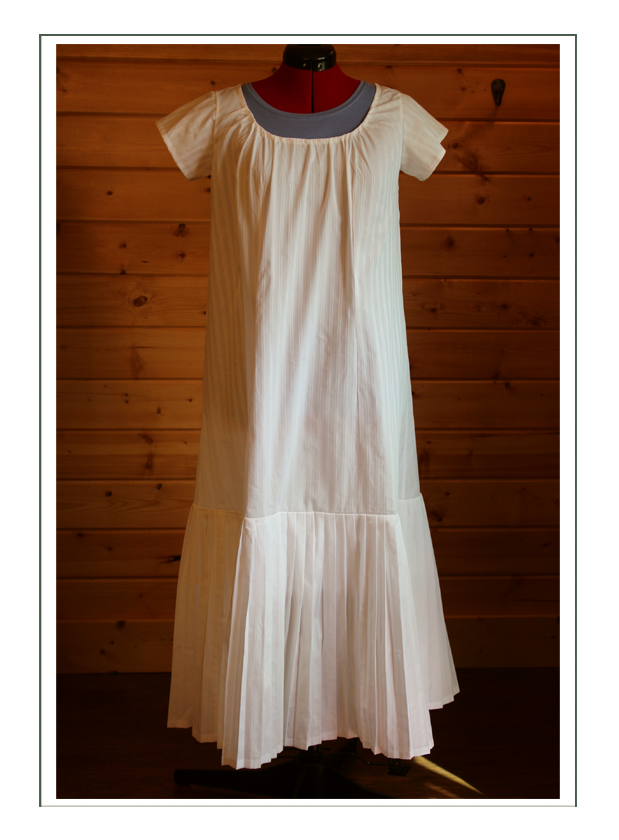
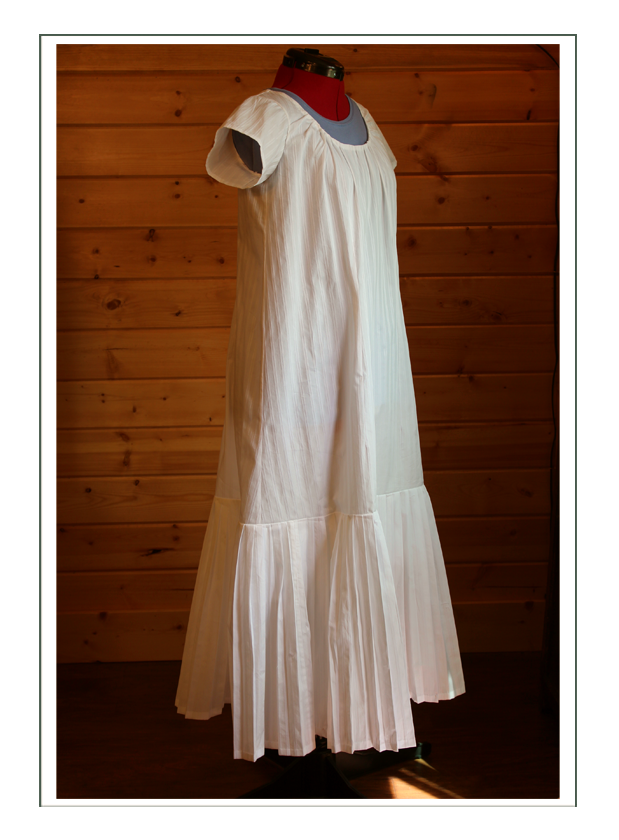
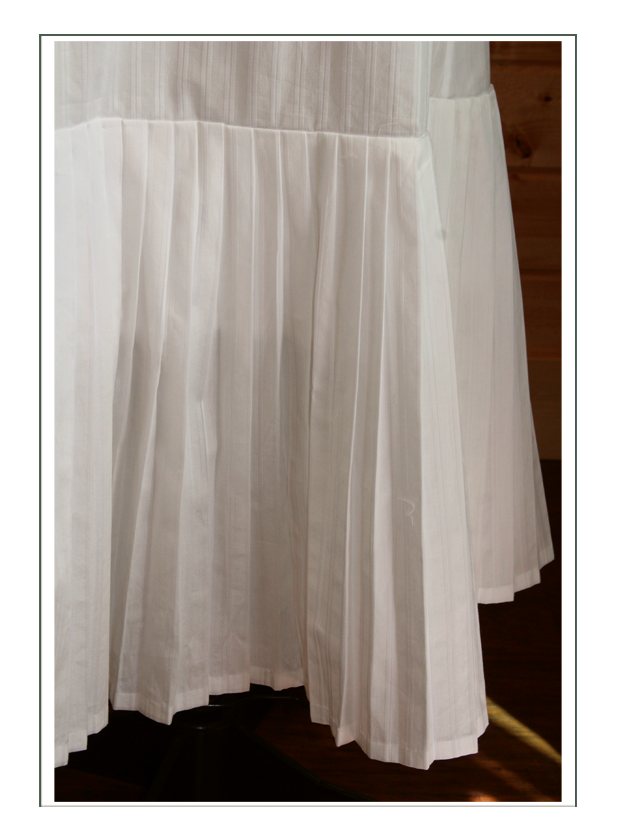
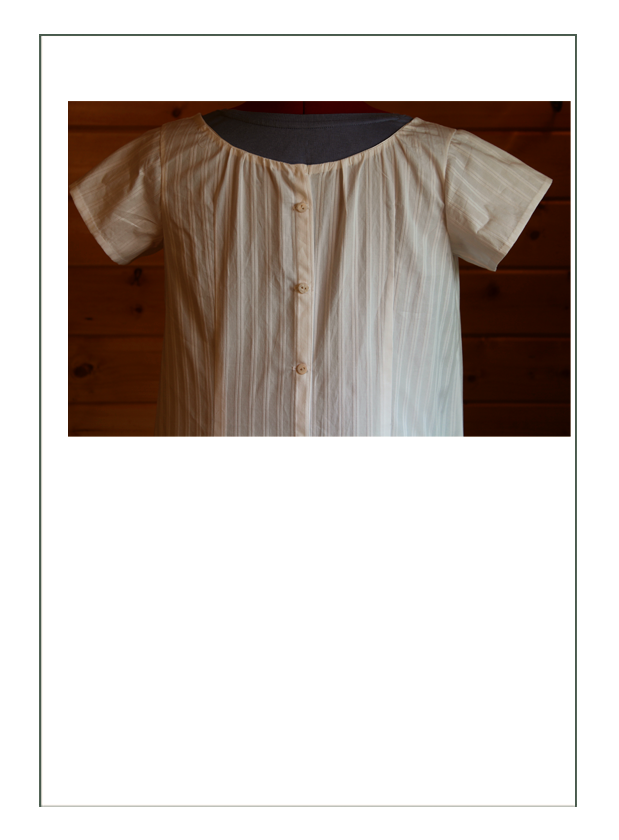
Corset
The working woman of 1910 had to choose between the 1909 model corset and the brand new 1910 model. The older version, more logical as comfort and familiarity would be a key for work, is a bit shorter through the torso with a tight waist cinching and no garters. The later version always had garters at center front and back, and covered the hips entirely.
For both types there was a choice between an underbust model which required the new “brassiere” as it was called by the French (“breast supporter” in America) a medium as Ellies, or a high busted version which went 1″ above the nipple line. The problem with the later was either the woman had to be fully endowed to fill the top, or had to buy inflatable inserts to finish the silhouette.
Ellie’s medium bust and long profile is padded out by era specific designed rump and breast pads to get the “off center” and “monobosum” look of the Edwardians. Hers is made of a tea-dyed couteil and would have been bought out of a catalog.
She has machine embroidery at the hip to give some personalization. The busk is a longer 13″ straight metal, as the spoon busk is not needed for the straight profile, especially with uniforming (which is technically sportswear) which did allow for movement of the hips via the hip gussets.
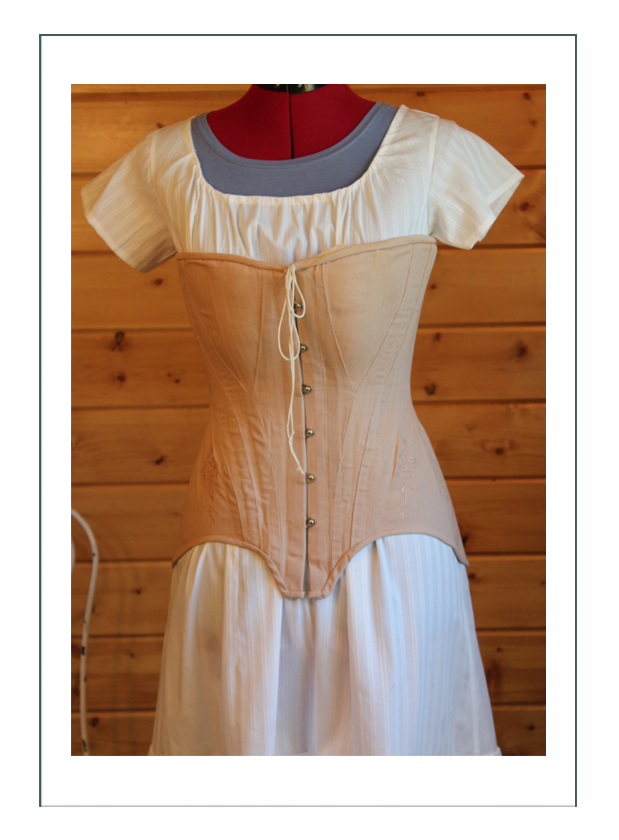
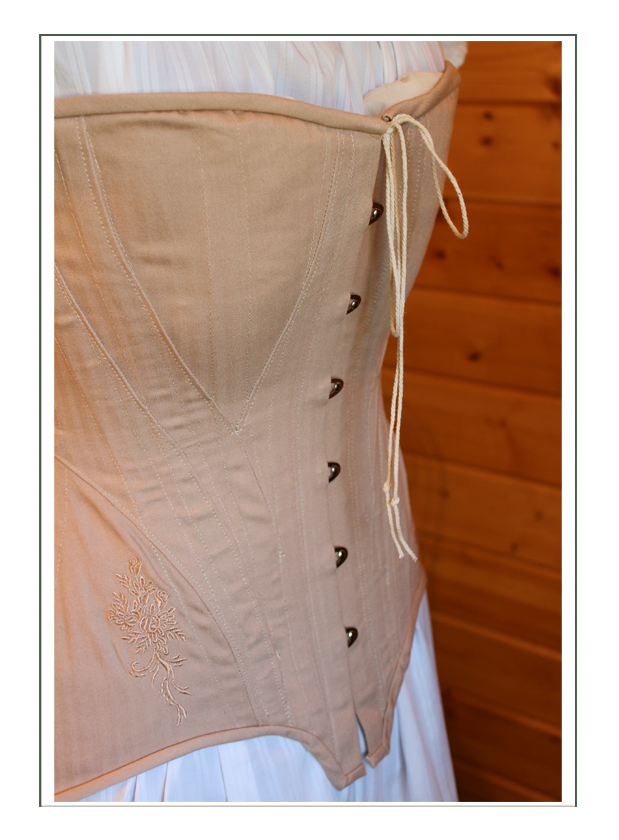
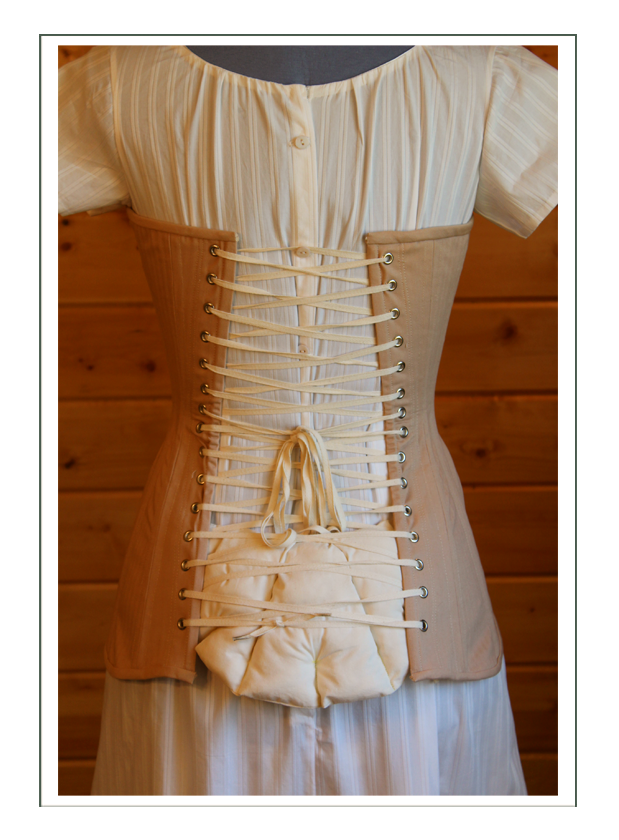
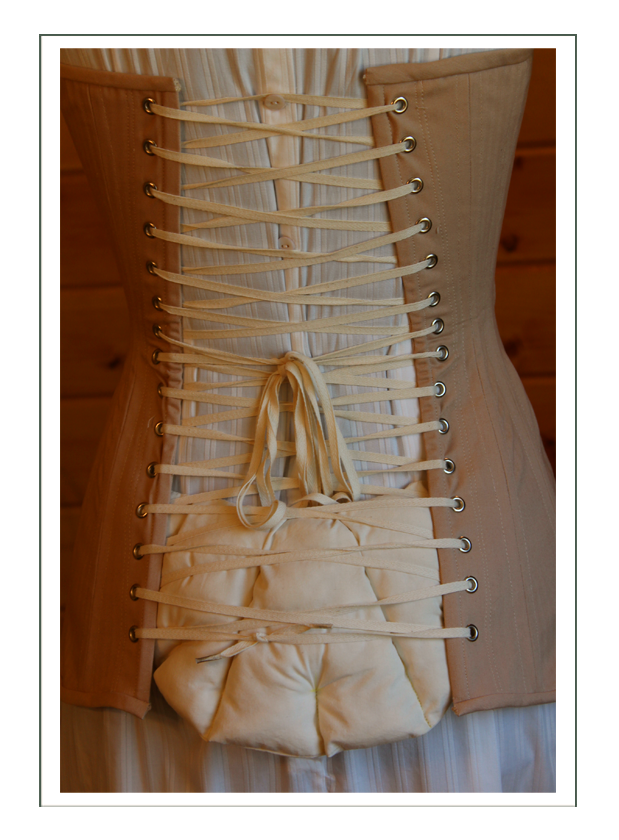
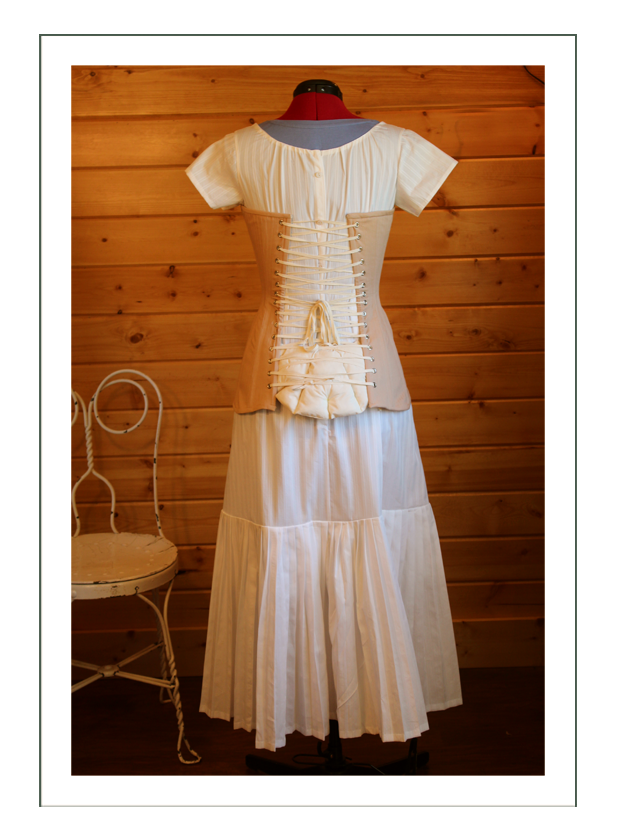
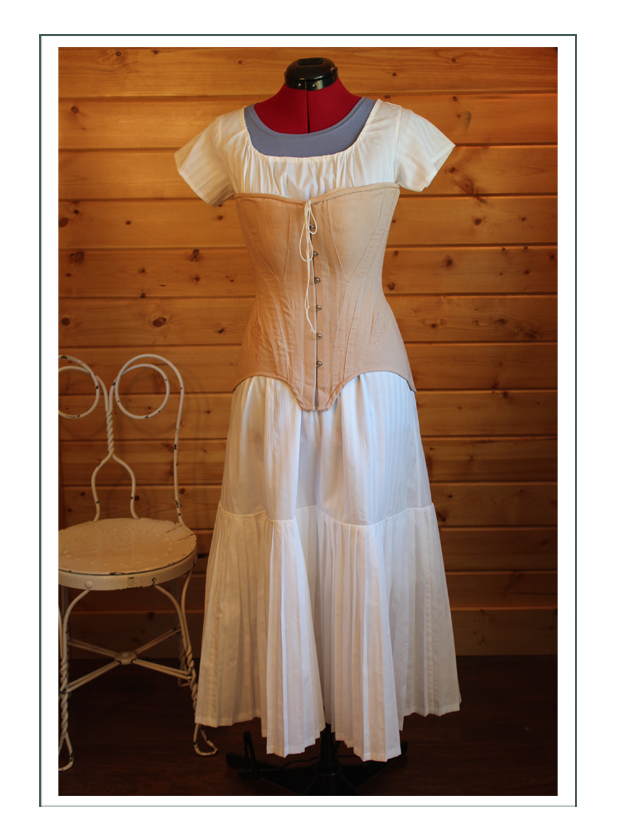
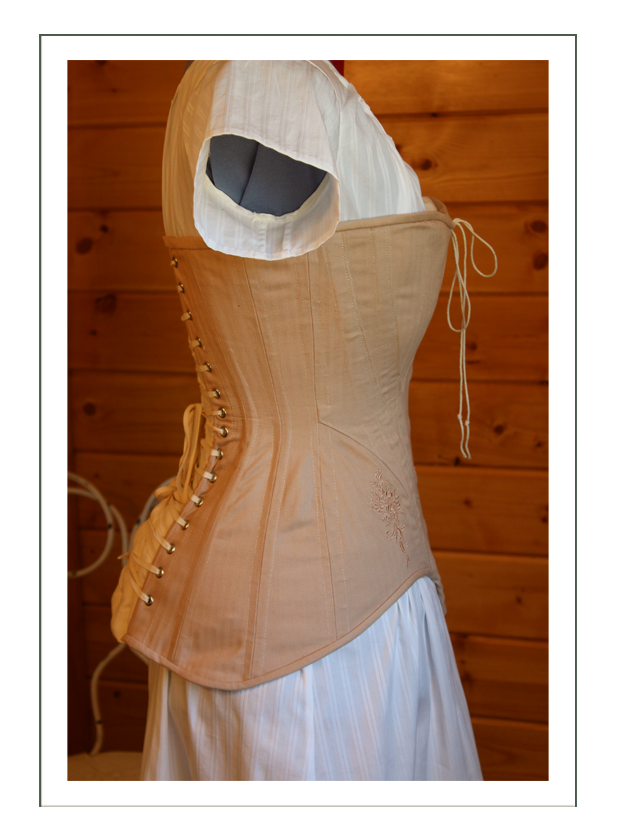
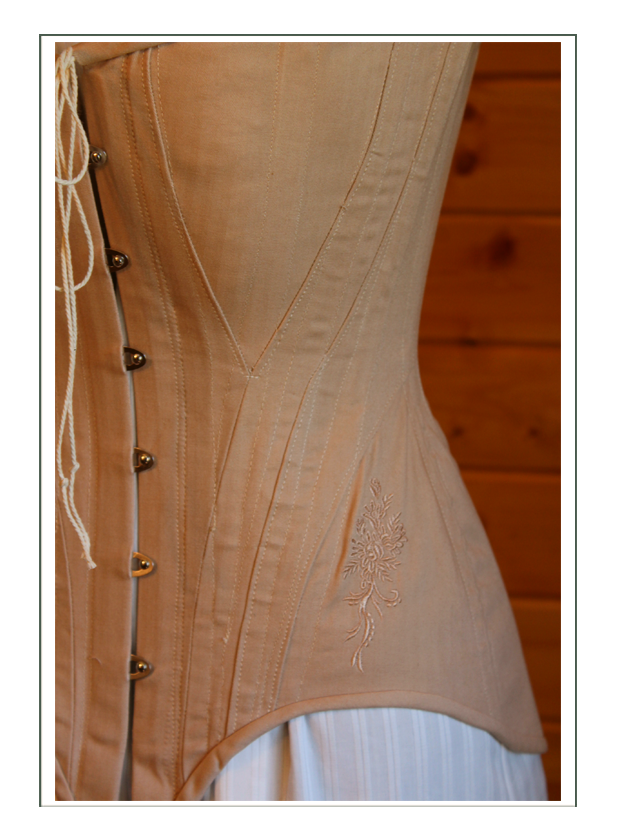
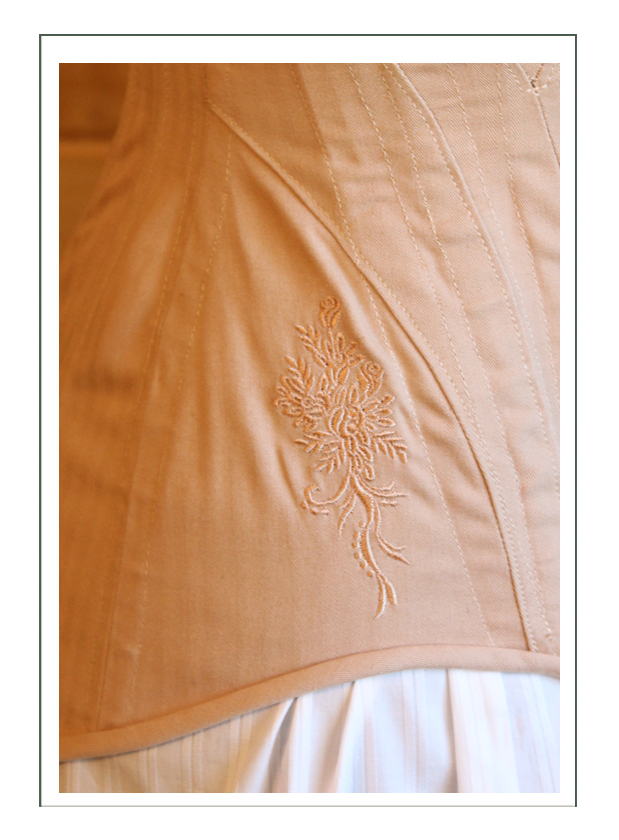
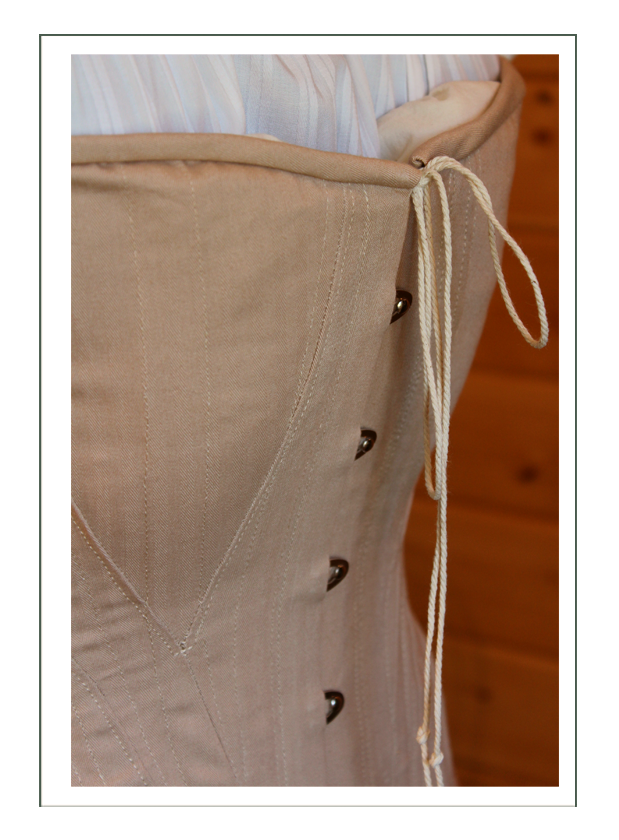
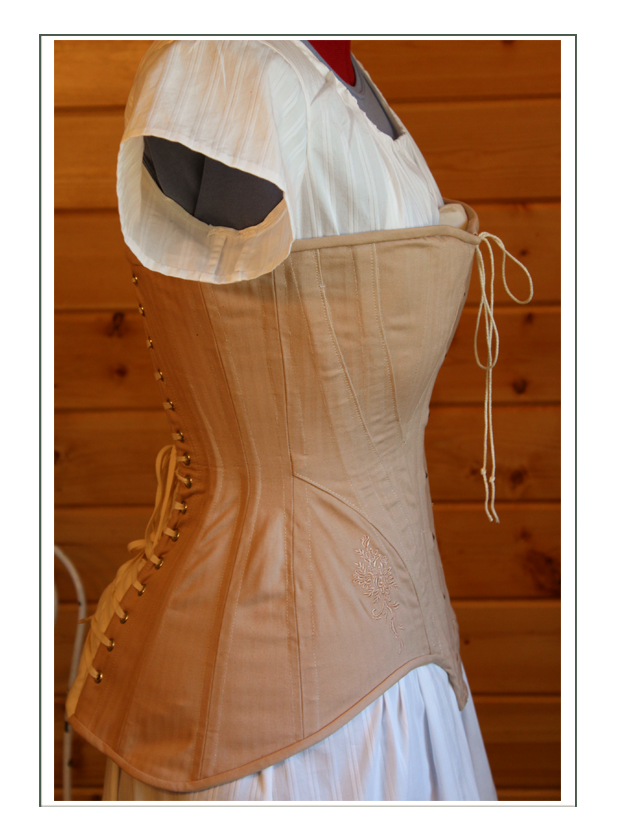
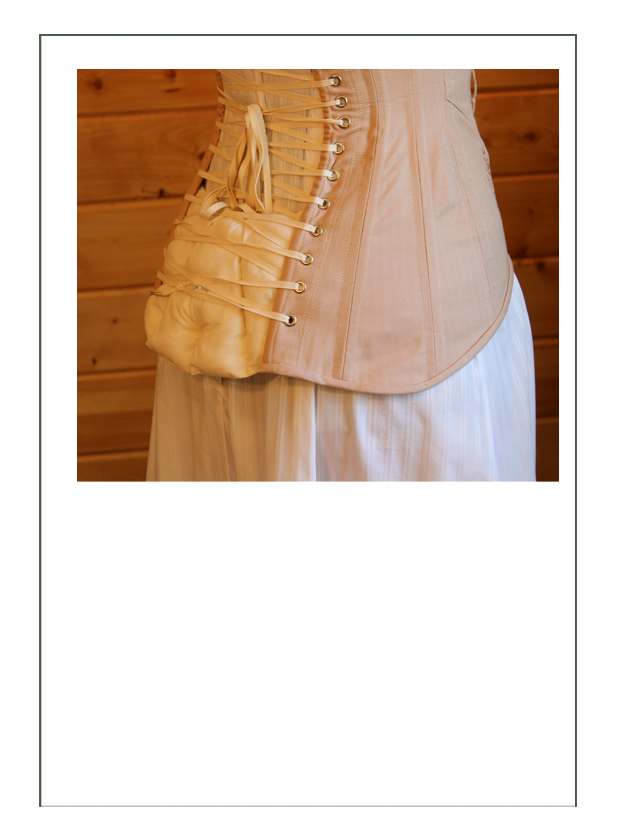

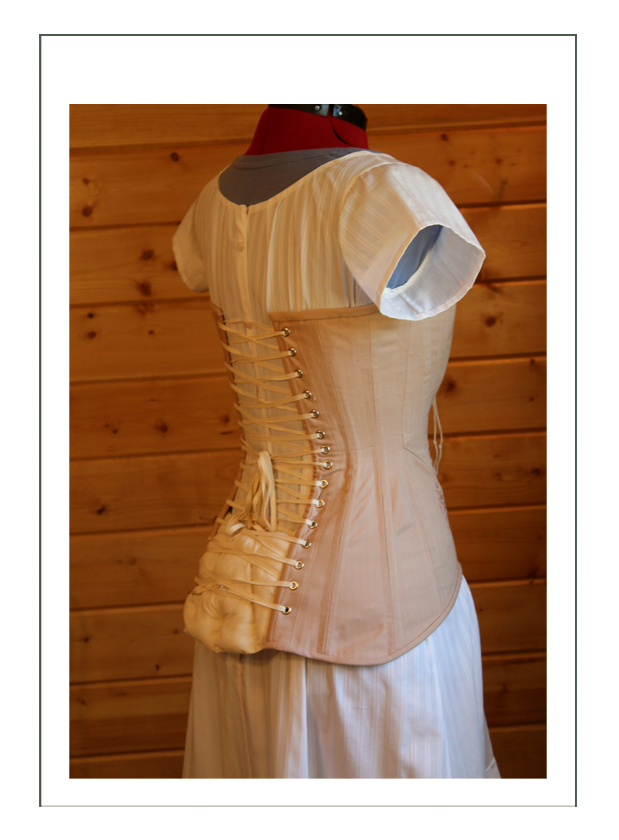
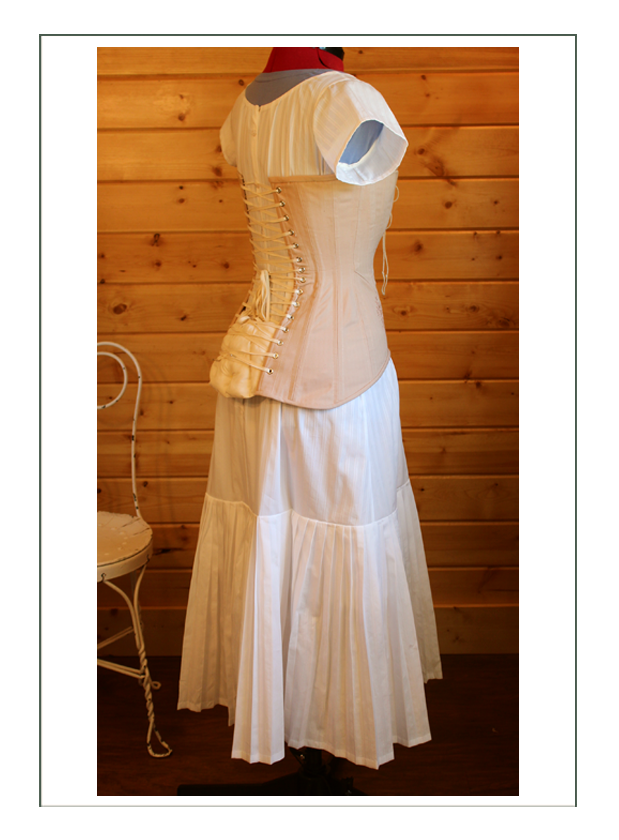
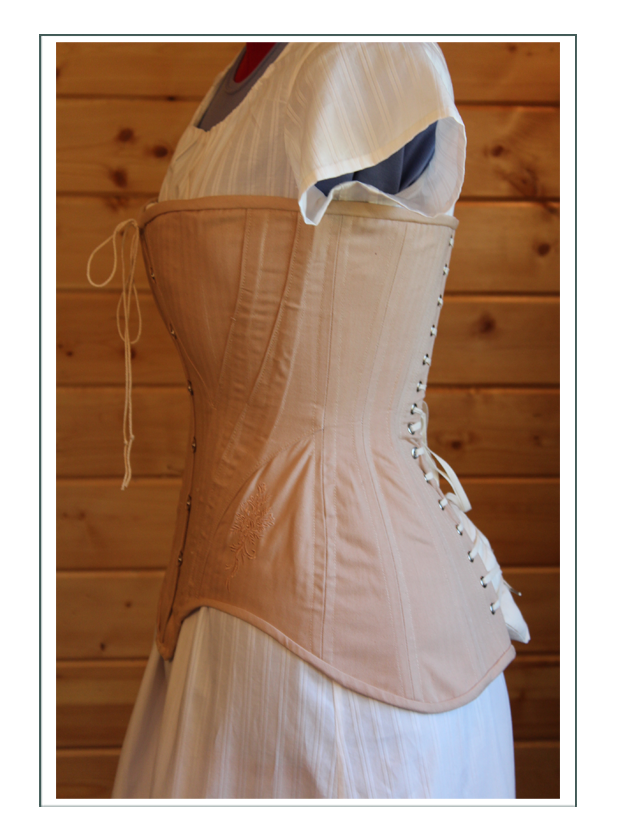
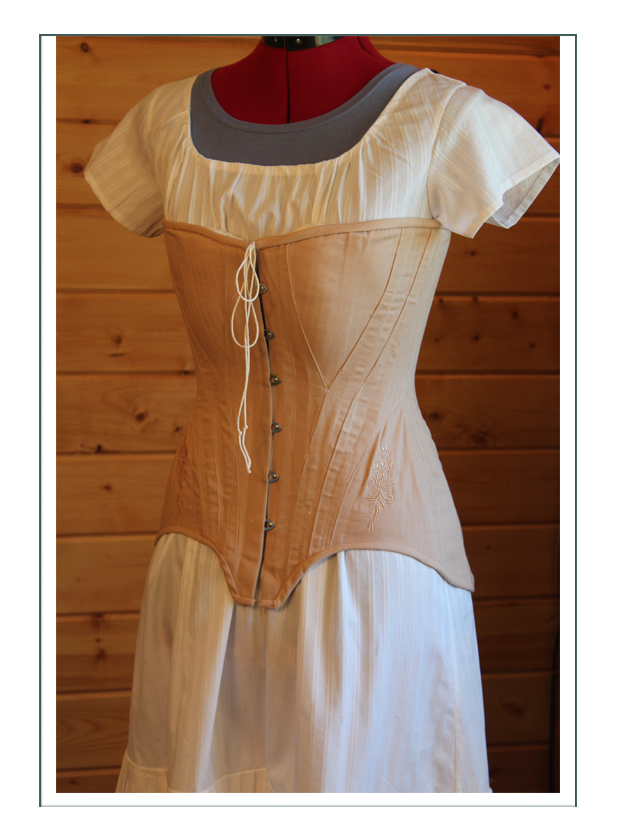
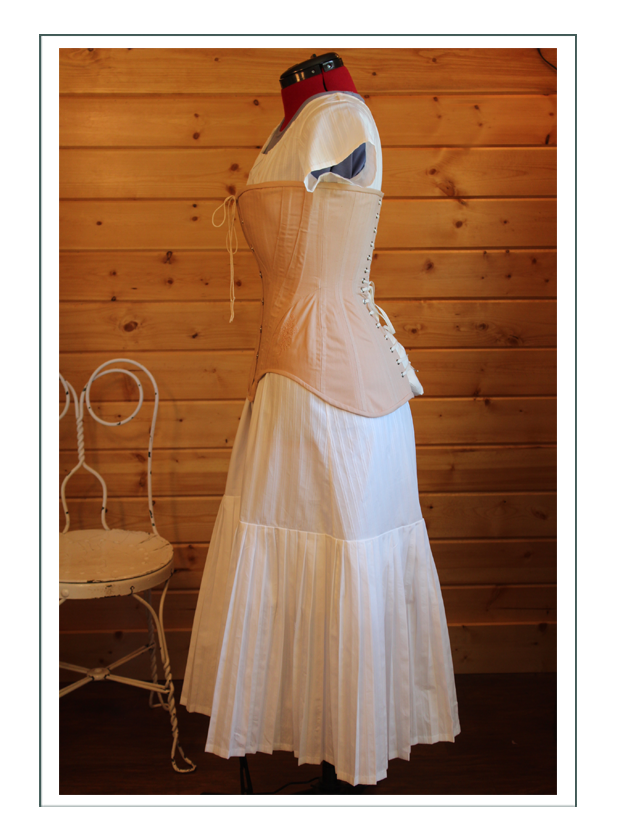
Drawers
 Dress
Dress

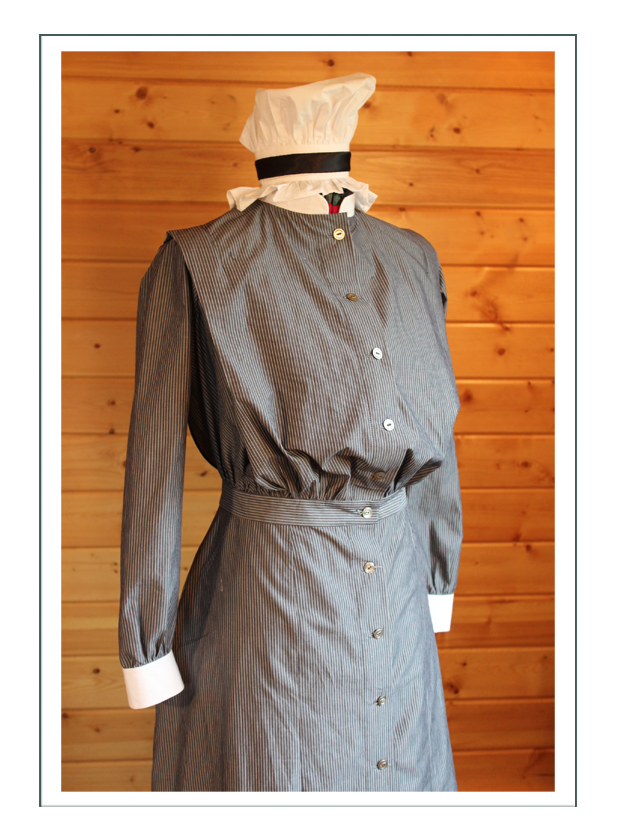
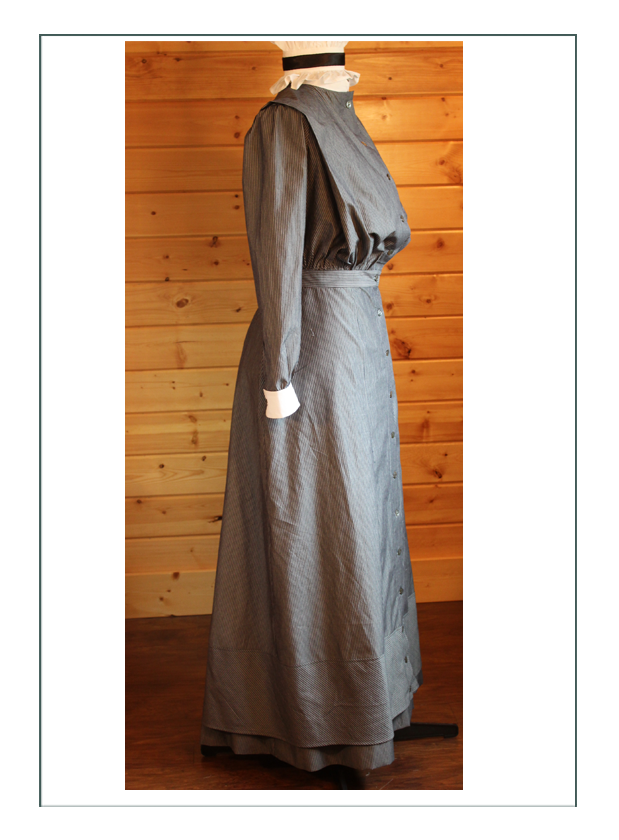
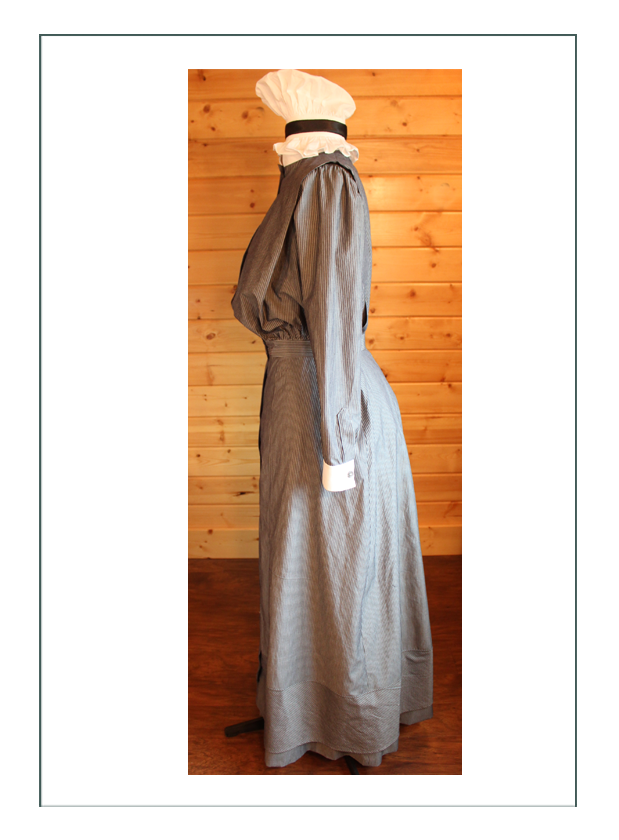
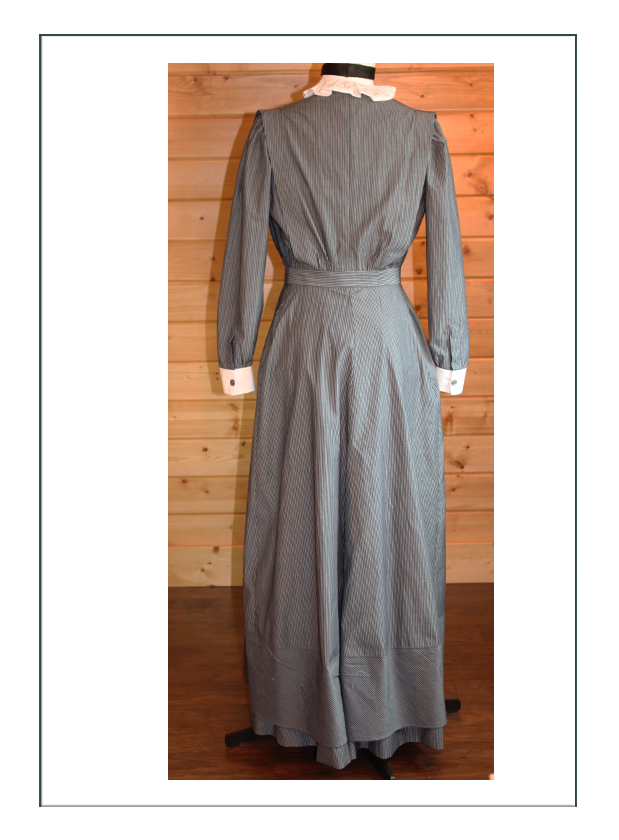
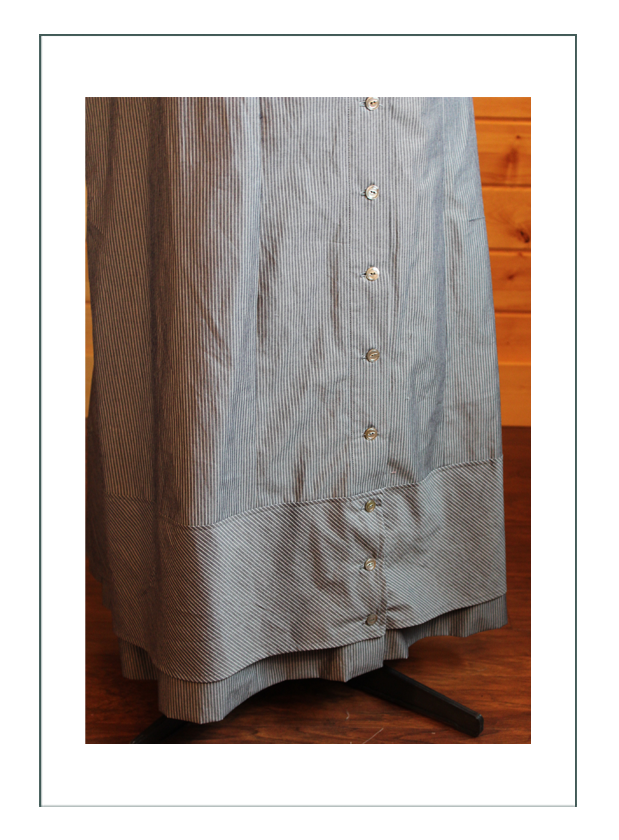
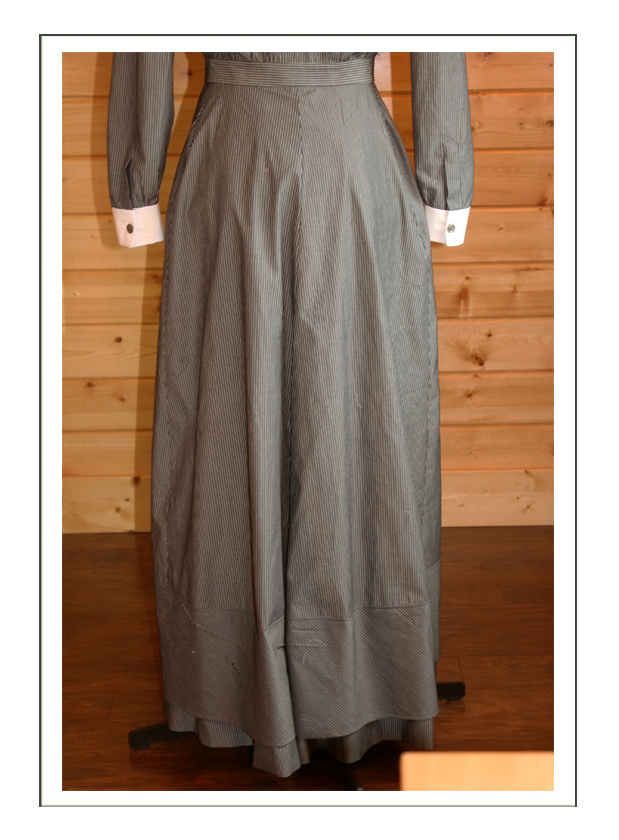
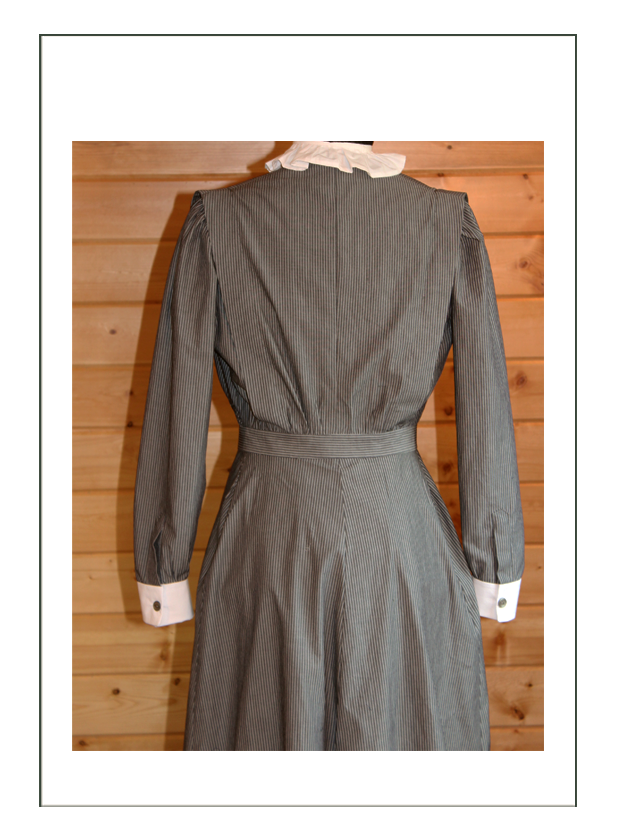

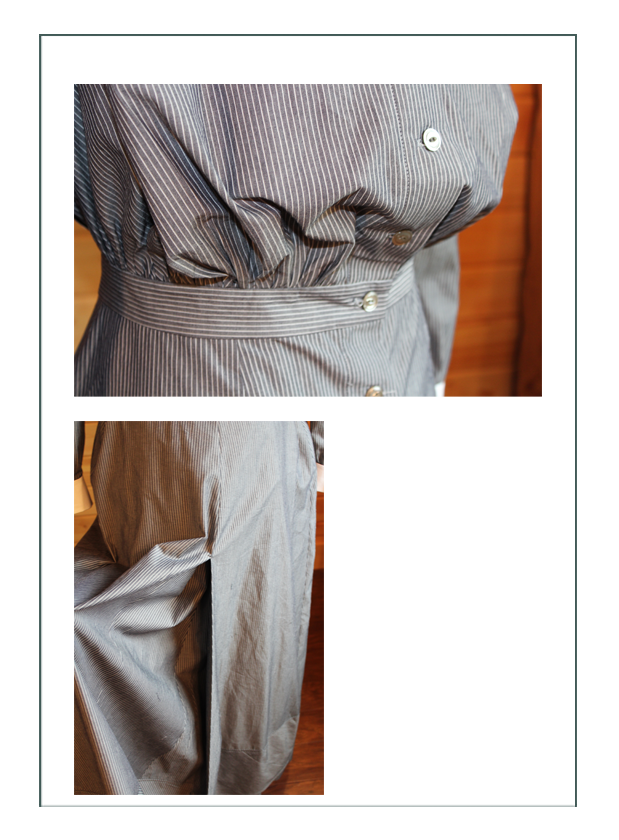
Apron
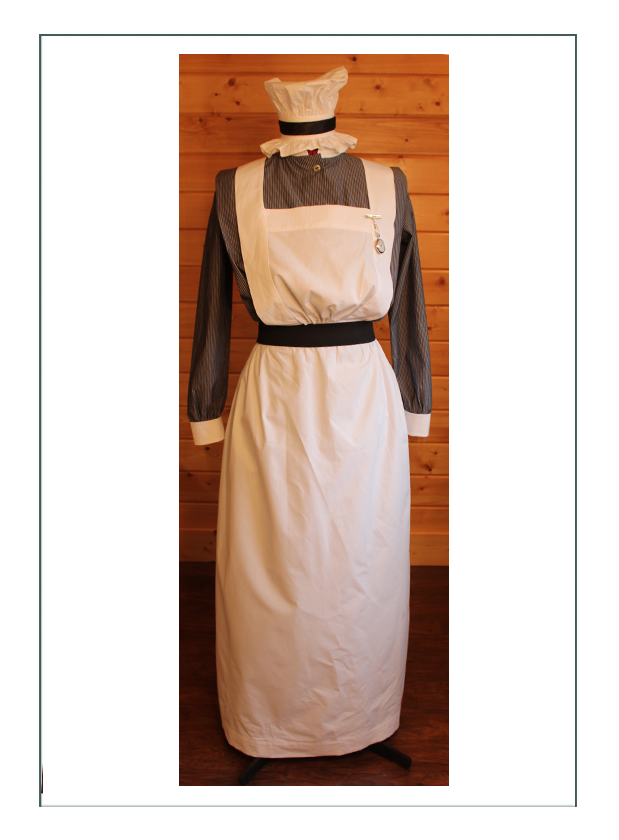
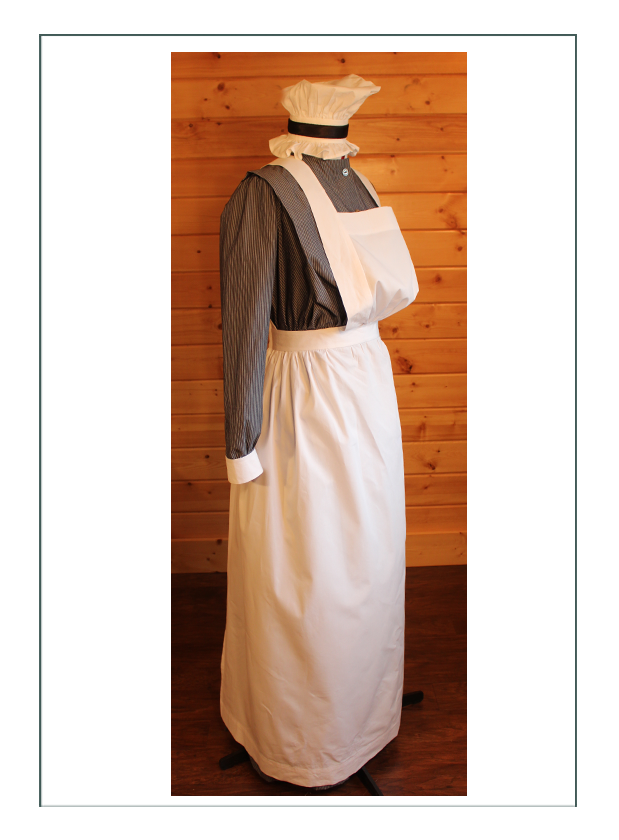
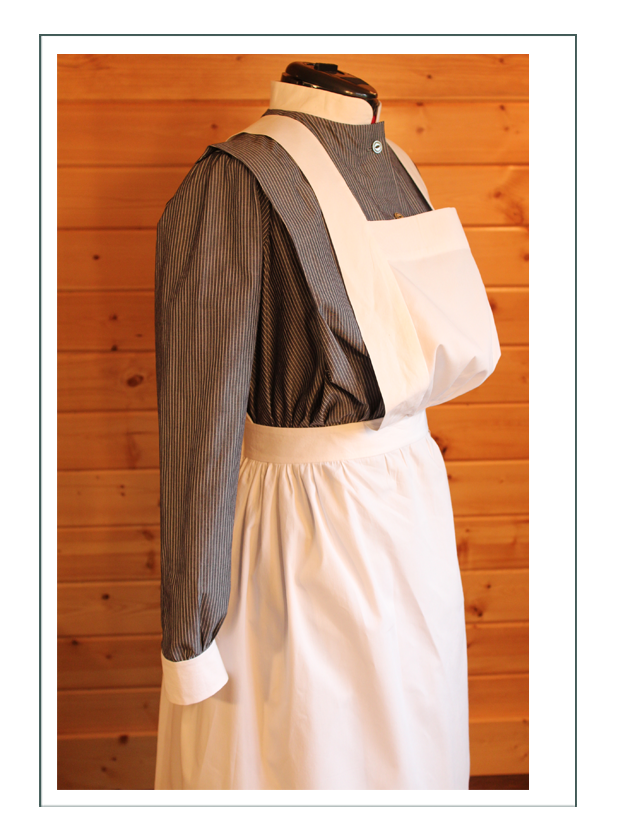
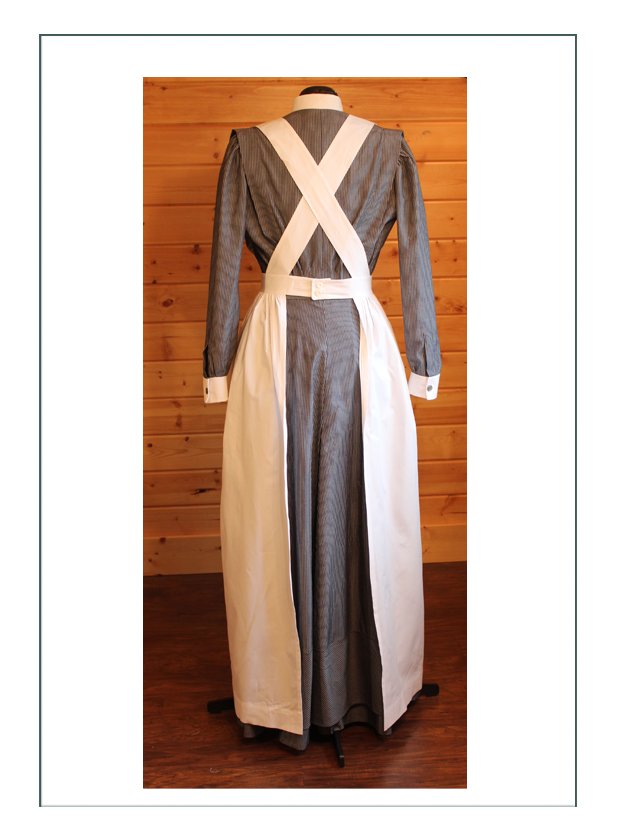
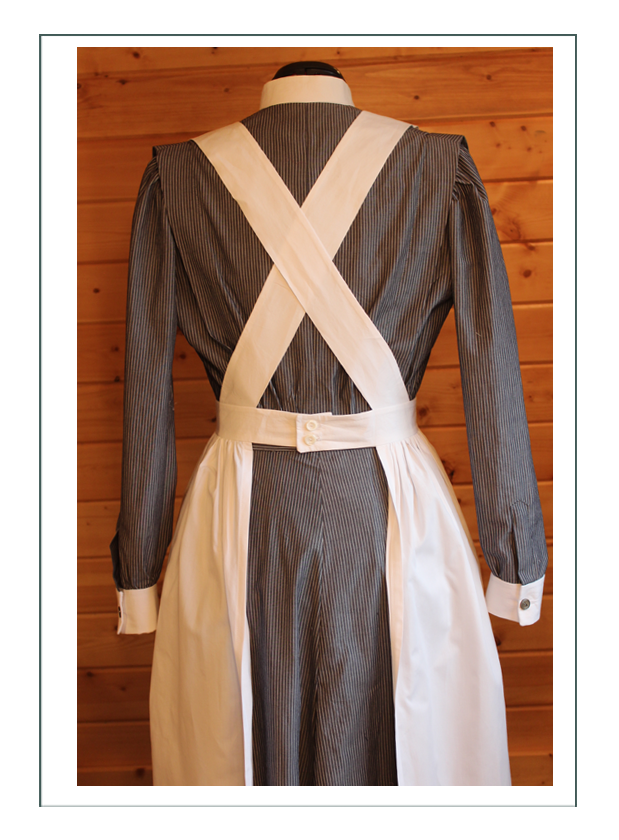
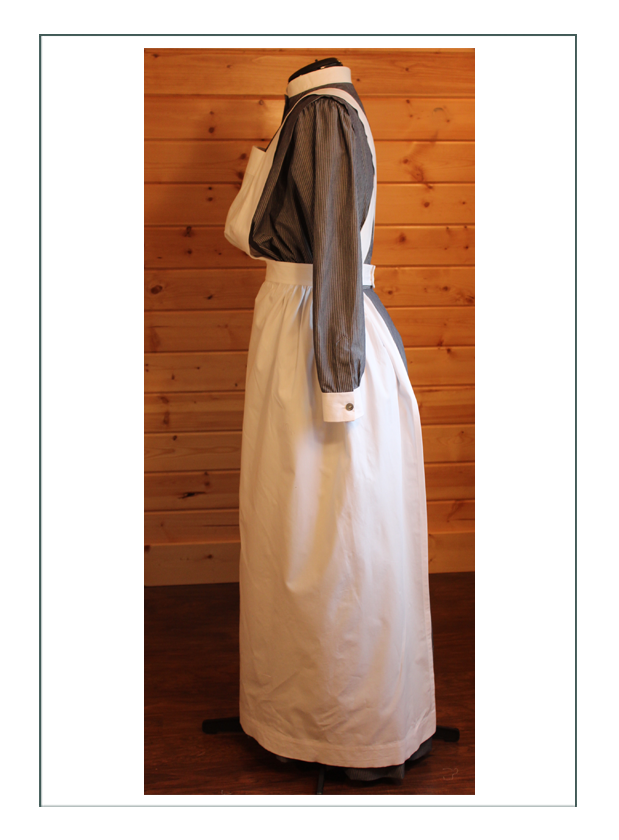
Nursing Cap
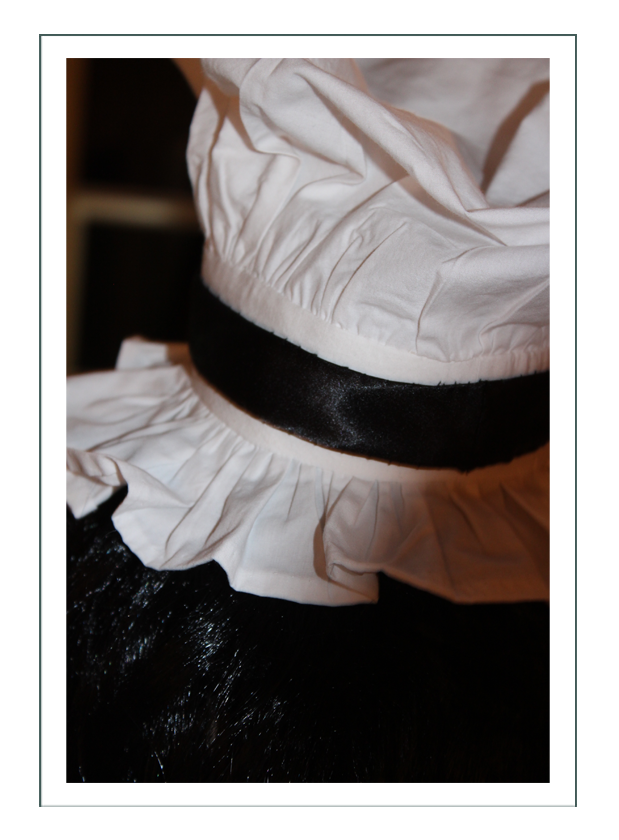
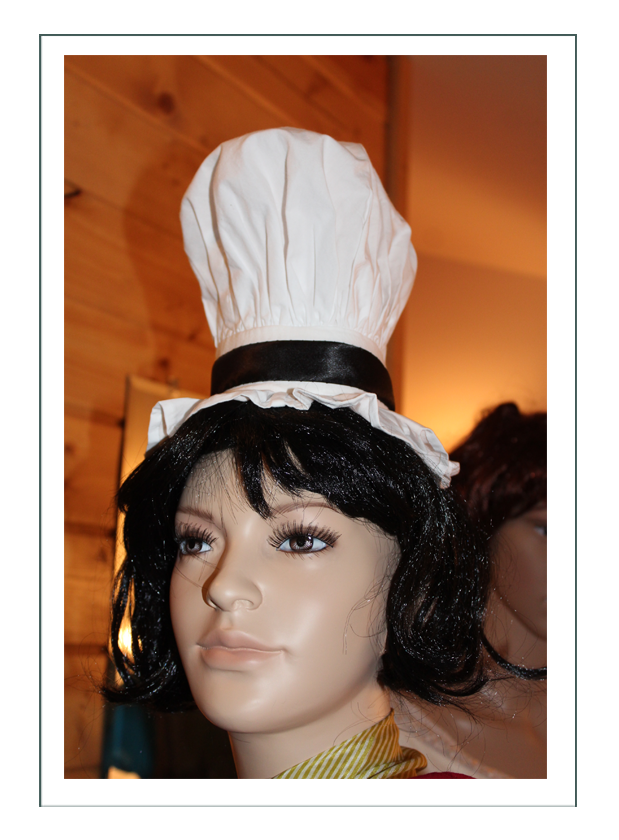
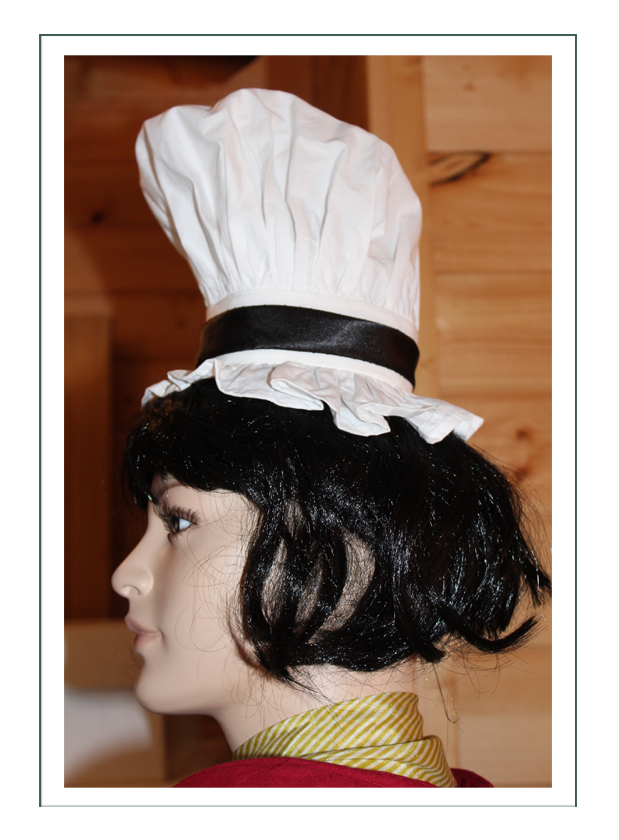
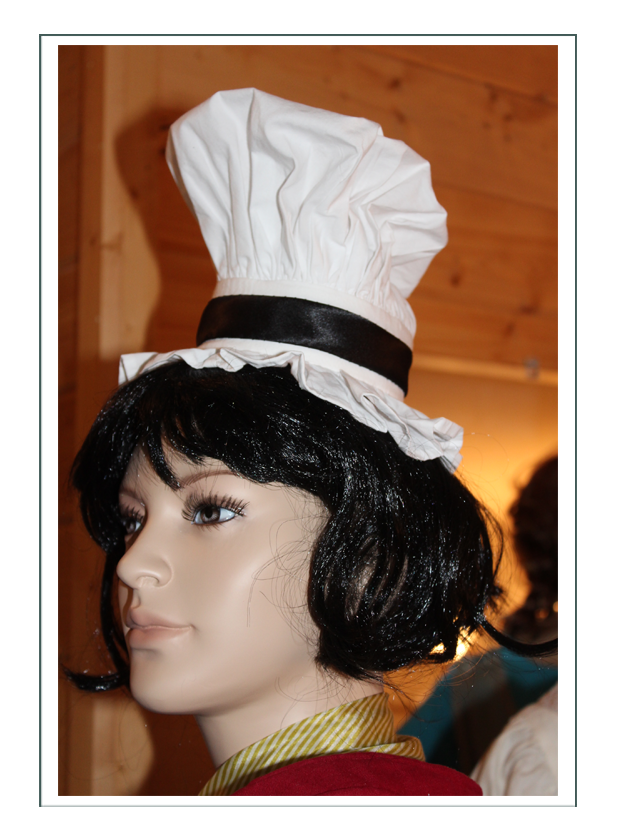
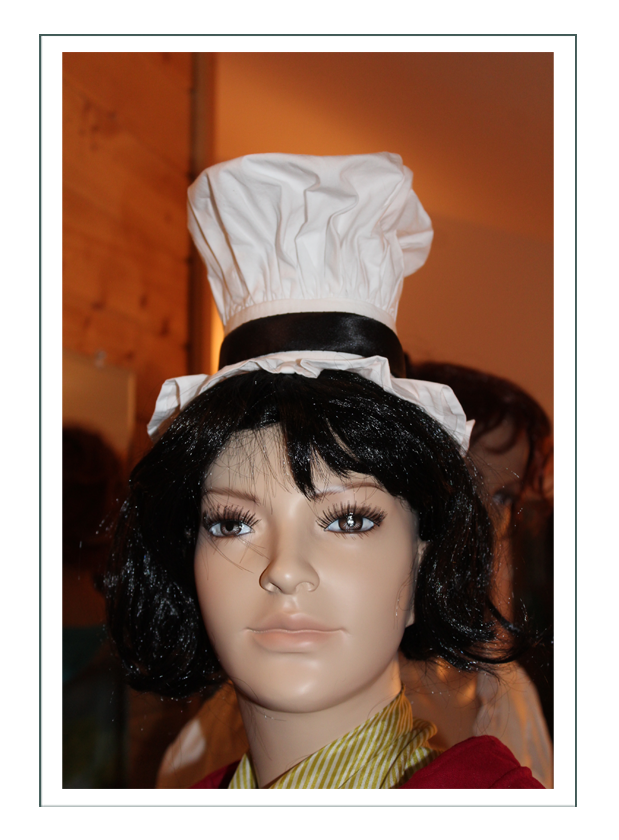
Shoes
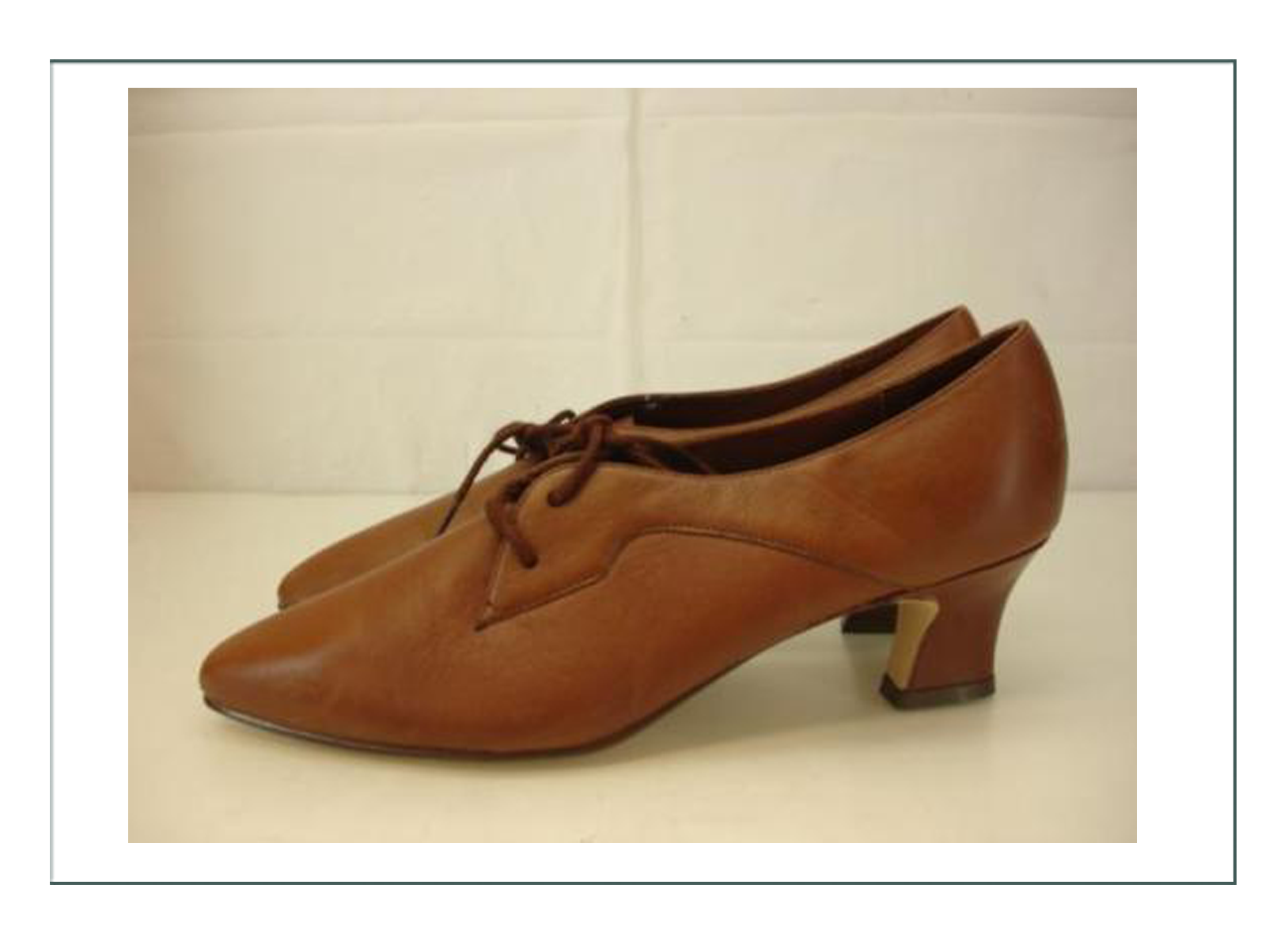
Belt
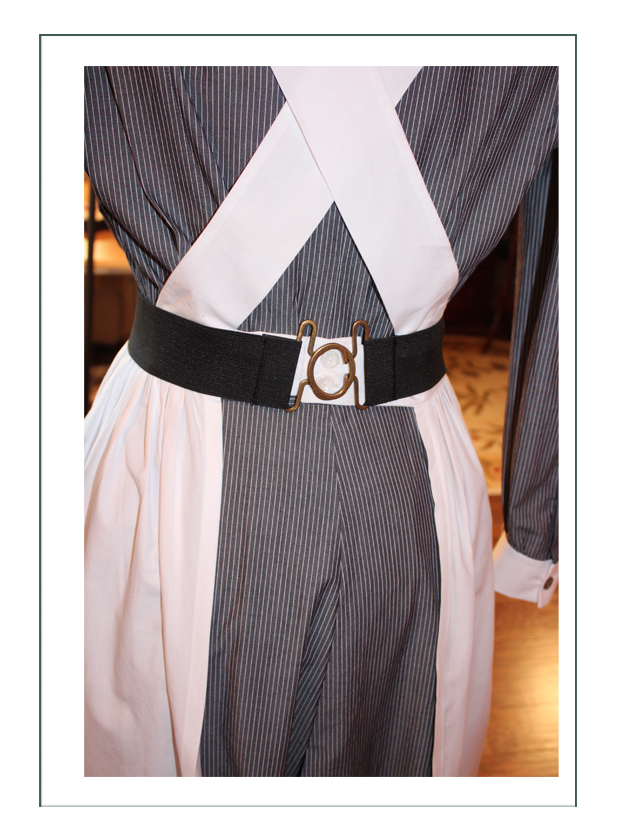
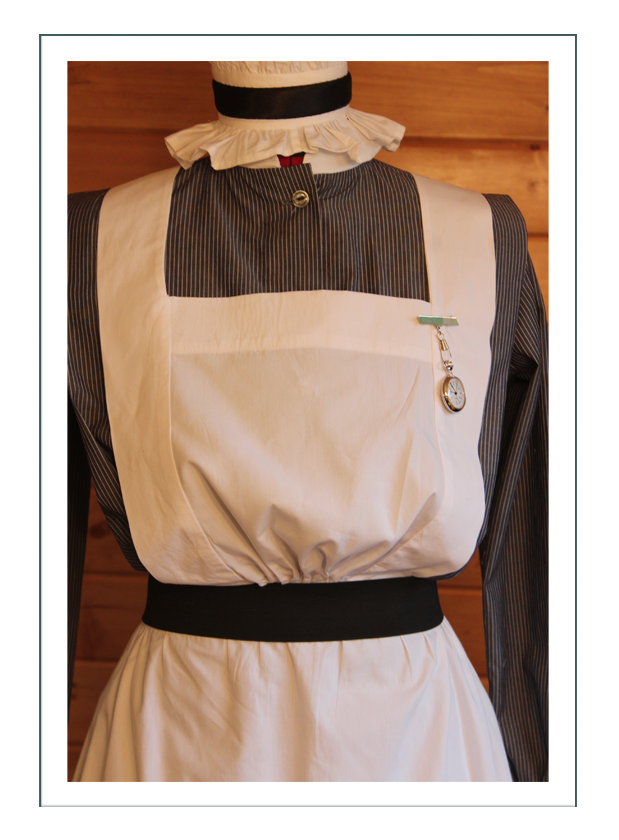
Earrings, Watch Fob
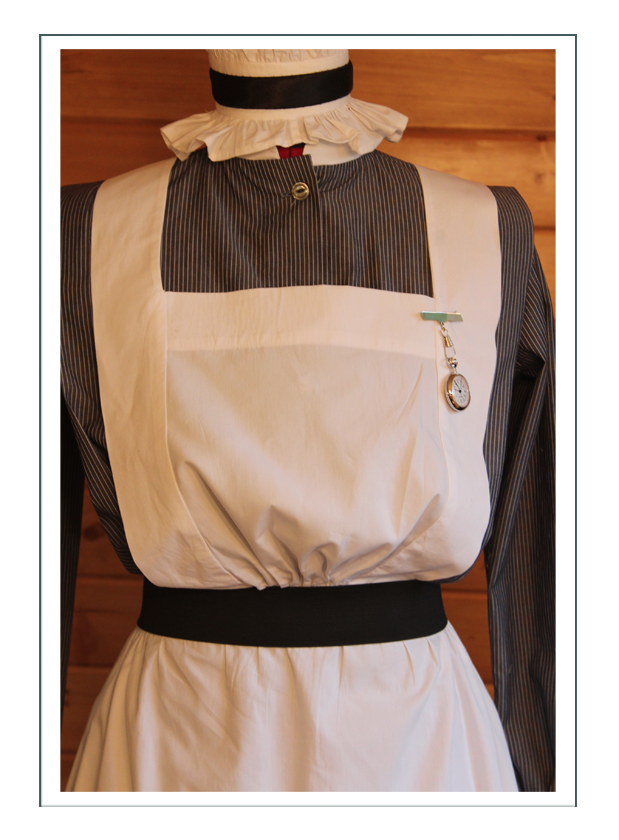
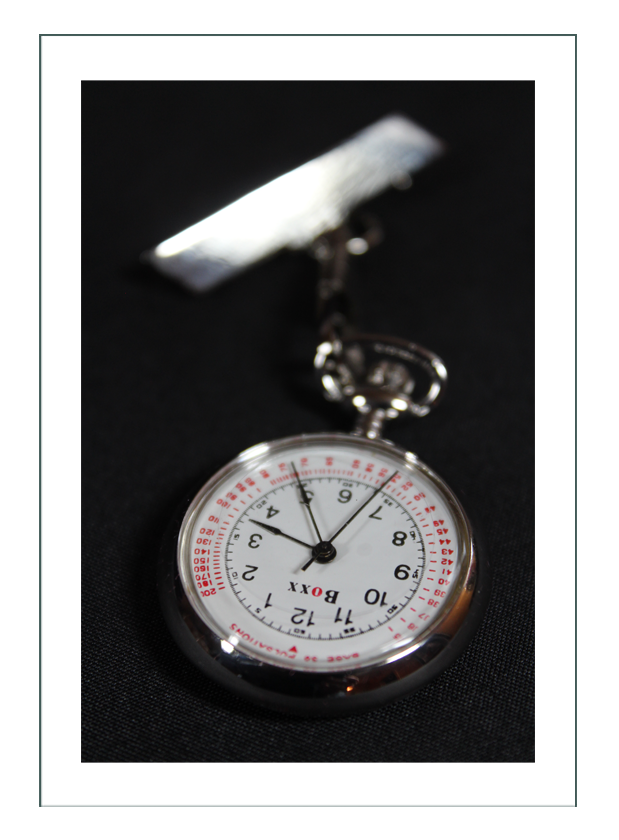
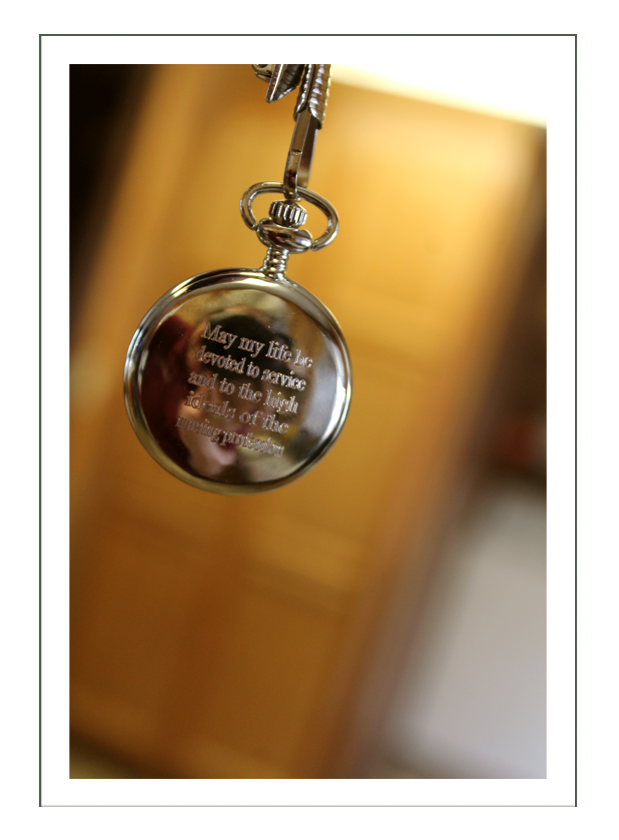
Chatelaine Bag with Clip and Tools
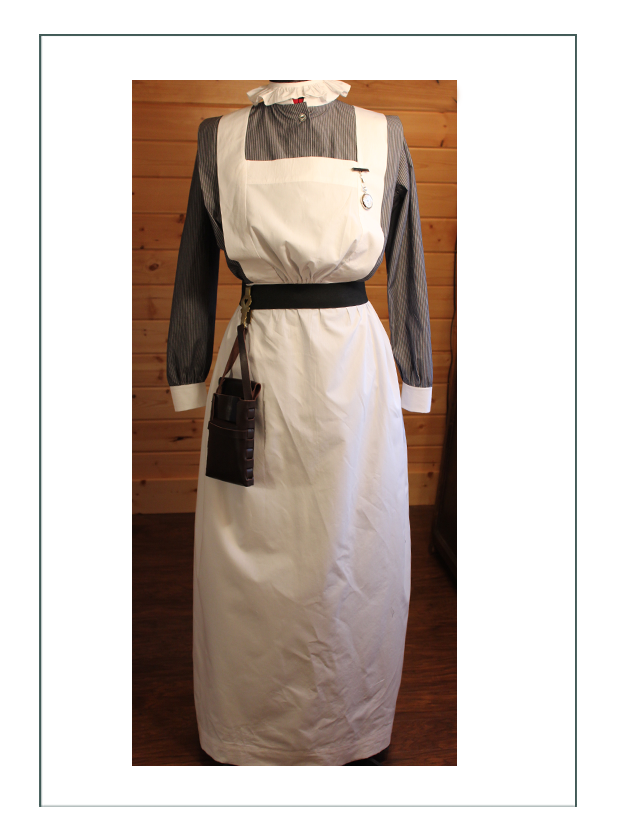
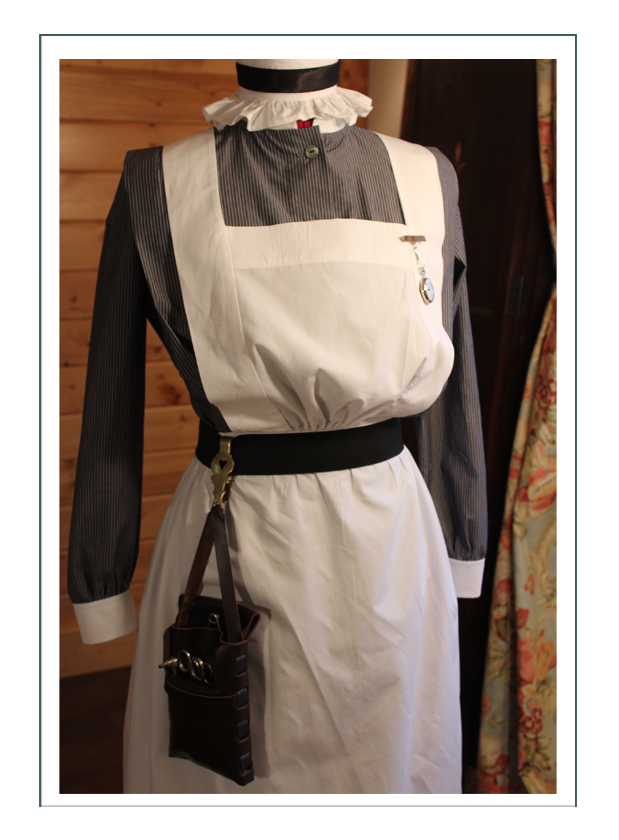
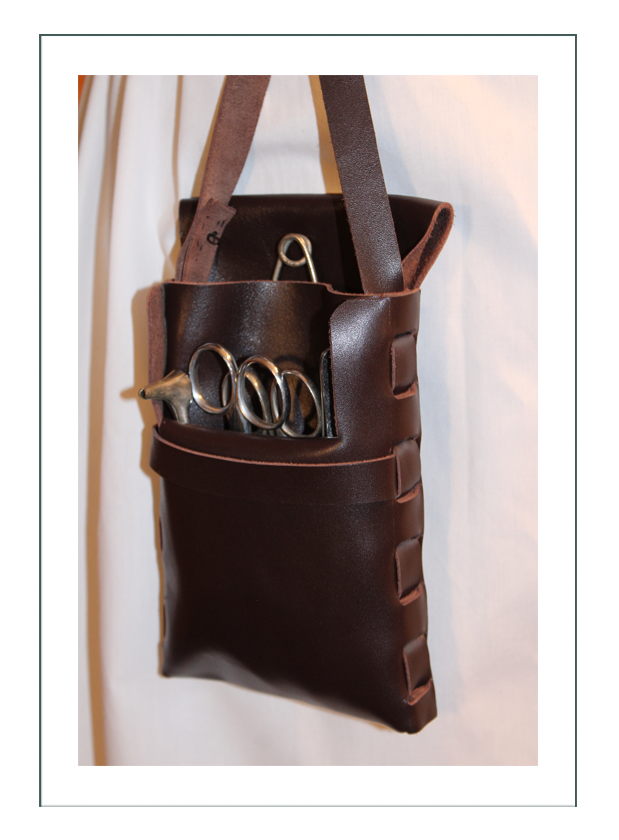
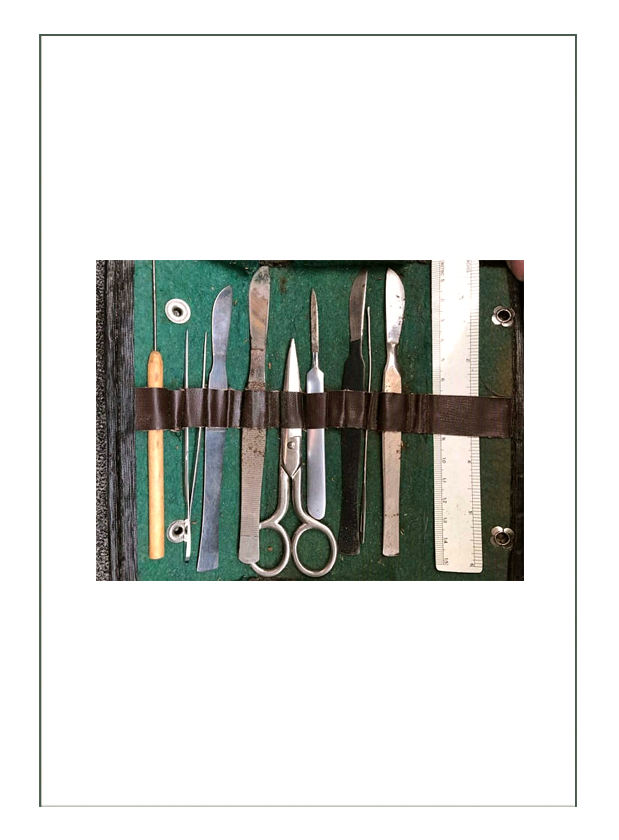
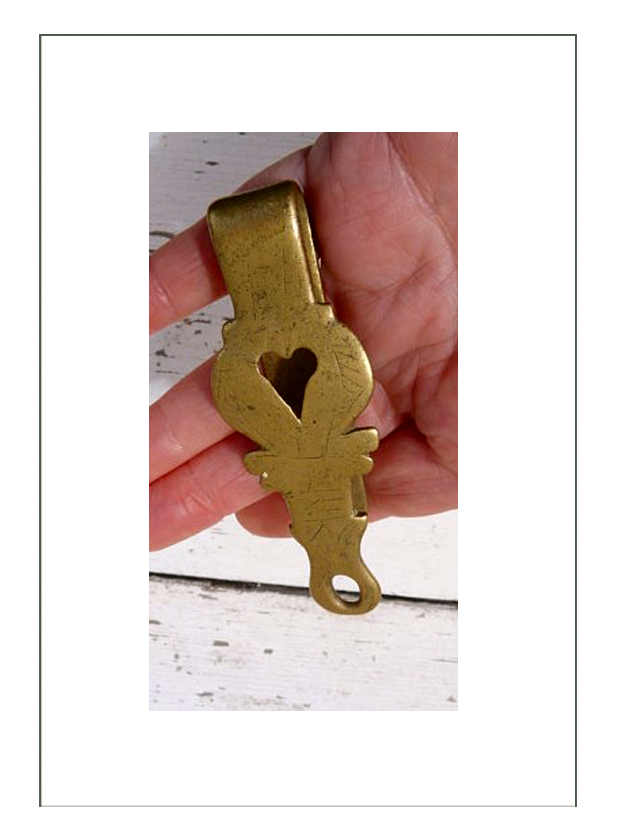


Click here to go to Ellie’s Nurse Historical Context page
Click here to go to Ellie’s Nurse Fashion History page
Click here to go to Ellie’s Nurse Design Development page
Click here to go to the top of this page
Click here to go to the Buffalo Gals Introduction page with a list of the Gals
